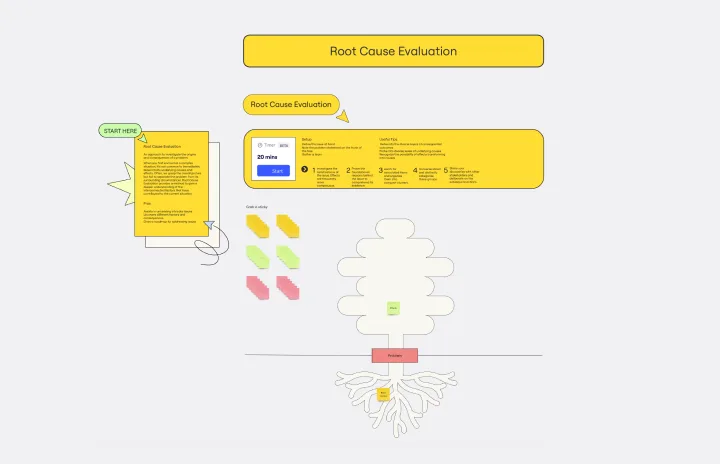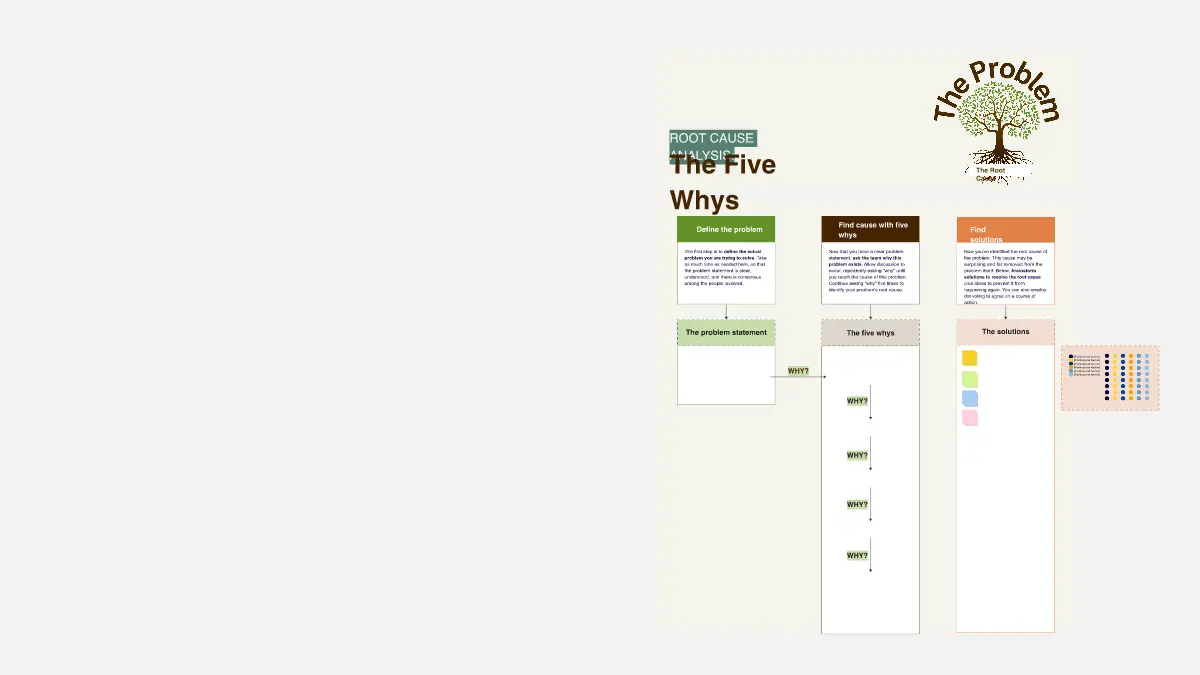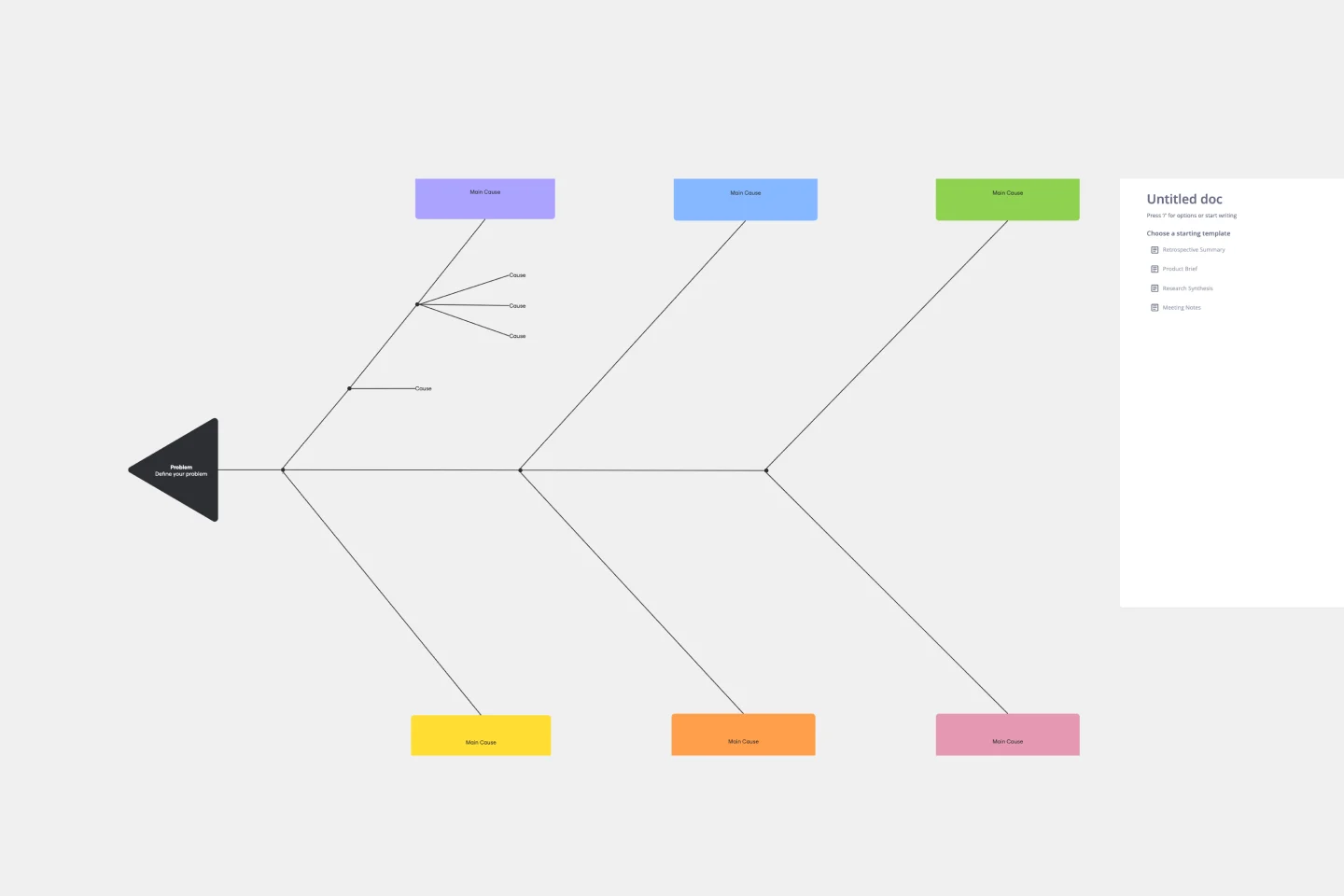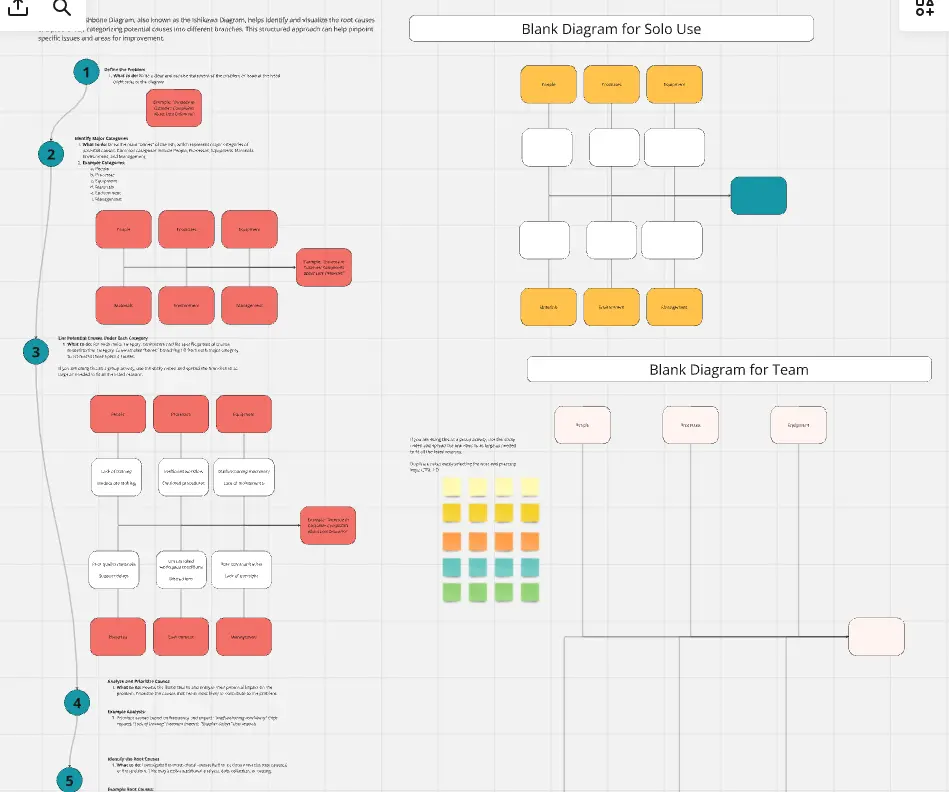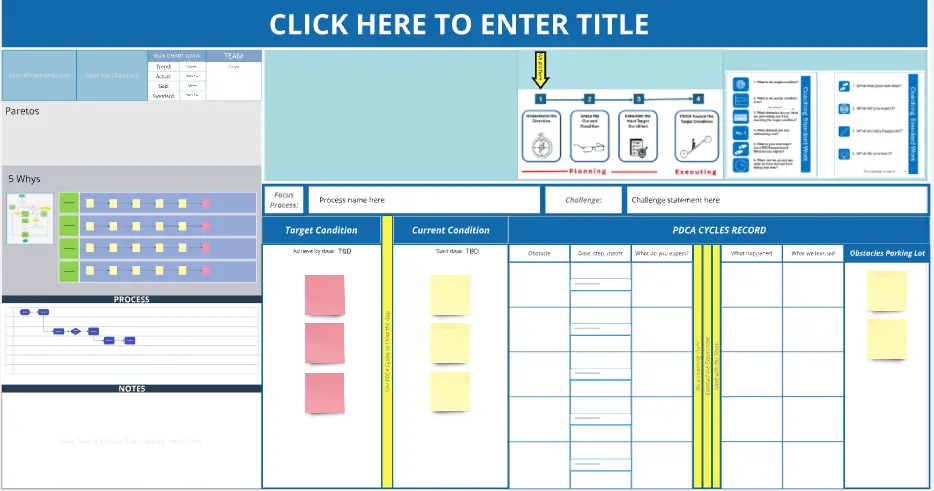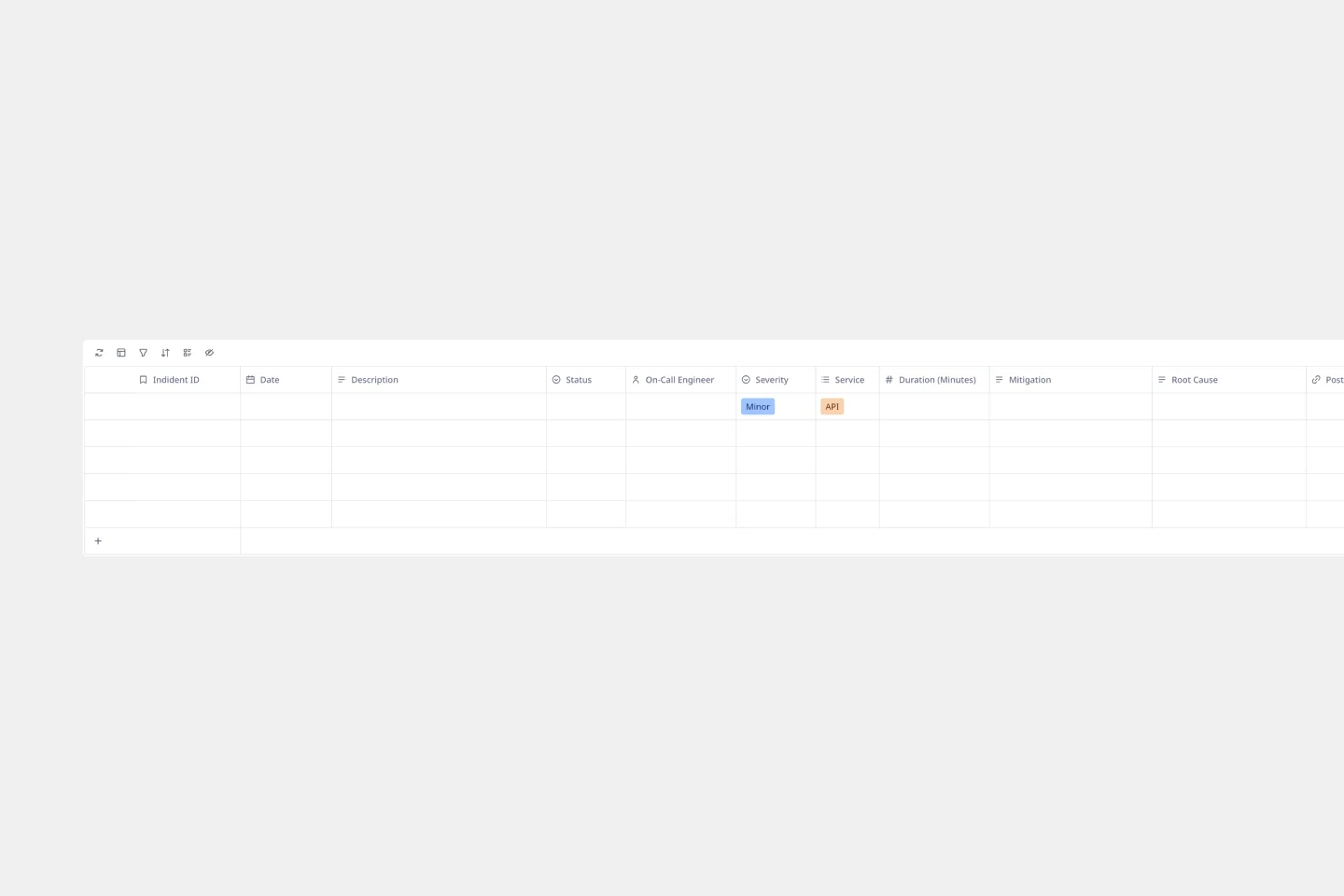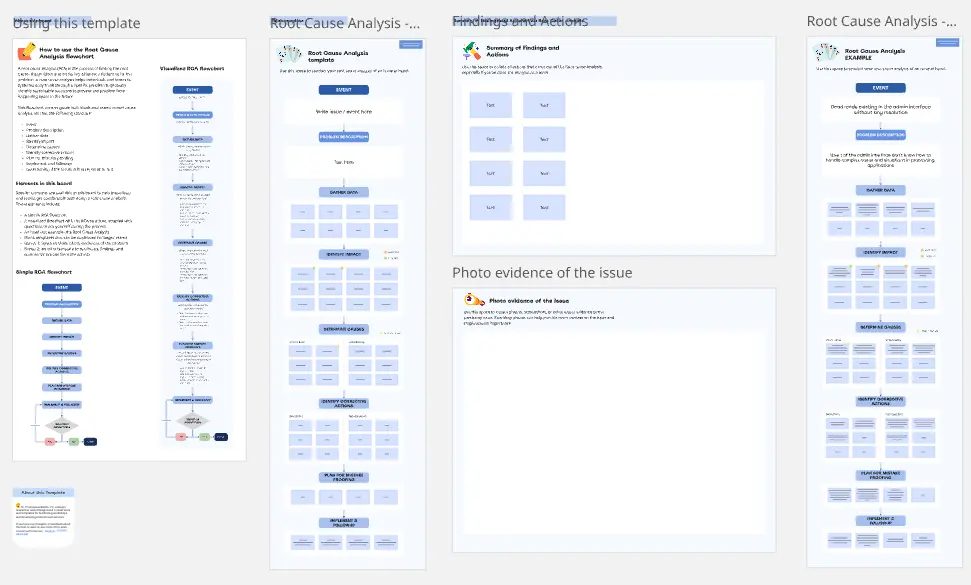About the Root Cause Analysis Templates Collection
Root cause analysis (RCA) templates in Miro are designed to help teams identify, analyze, and solve problems at their source. These templates provide a structured approach to uncovering the underlying causes of issues, ensuring that solutions are effective and long-lasting. Whether you're dealing with a recurring problem or a one-time incident, Miro's root cause analysis templates can guide you through the process, making it easier to collaborate and communicate with your team.
Why you'll love our root cause analysis templates
Using Miro's root cause analysis templates offers many benefits that can significantly improve your problem-solving efforts:
Structured approach: The root cause analysis template provides a clear, step-by-step framework that helps teams systematically identify the root causes of problems.
Collaboration: Miro's online workspace allows team members to collaborate in real-time, regardless of their location, making it easier to gather diverse perspectives and insights.
Visualization: The templates' visual nature helps teams better understand complex issues and the relationships between different factors.
Efficiency: By using a pre-designed template, teams can save time and focus on the analysis rather than on creating the structure from scratch.
Documentation: The templates help in documenting the entire analysis process, which can be useful for future reference and for sharing with stakeholders.
Flexibility: Miro's templates are customizable, allowing teams to adapt them to their specific needs and processes.
How to use the root cause analysis templates in Miro
Using Miro's free root cause analysis template is straightforward and can be broken down into a few simple steps:
Select a template: Start by choosing a root cause analysis template from Miro's template library. You can find templates for various RCA methods, such as the Fishbone Diagram, 5 Whys, and more.
Define the problem: Clearly state the problem you are trying to solve. This will be the starting point for your analysis.
Gather data: Collect relevant data and information about the problem. This can include observations, reports, and input from team members.
Identify possible causes: Use the template to brainstorm and list all possible causes of the problem. Encourage team members to think broadly and consider all potential factors.
Analyze causes: Examine each potential cause in detail to determine its likelihood and impact. Use the template's structure to organize your findings and identify the most probable root causes.
Develop solutions: Once the root causes are identified, brainstorm potential solutions. Use the template to document these solutions and plan the steps needed to implement them.
Implement and monitor: Put your solutions into action and monitor their effectiveness. Use the template to track progress and make any necessary adjustments.
By following these steps, teams can effectively use Miro's root cause analysis templates to identify and solve problems, leading to improved processes and outcomes.


